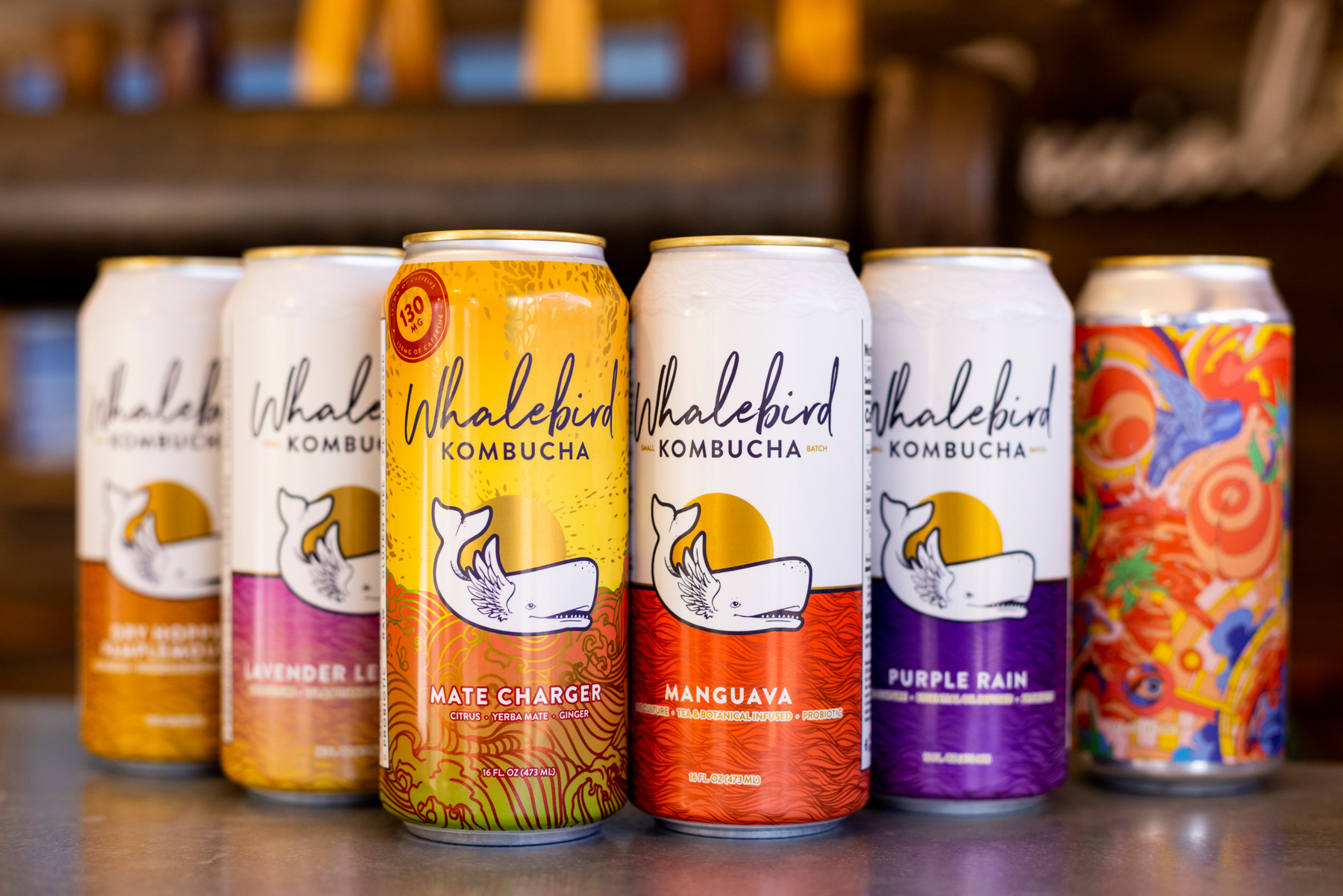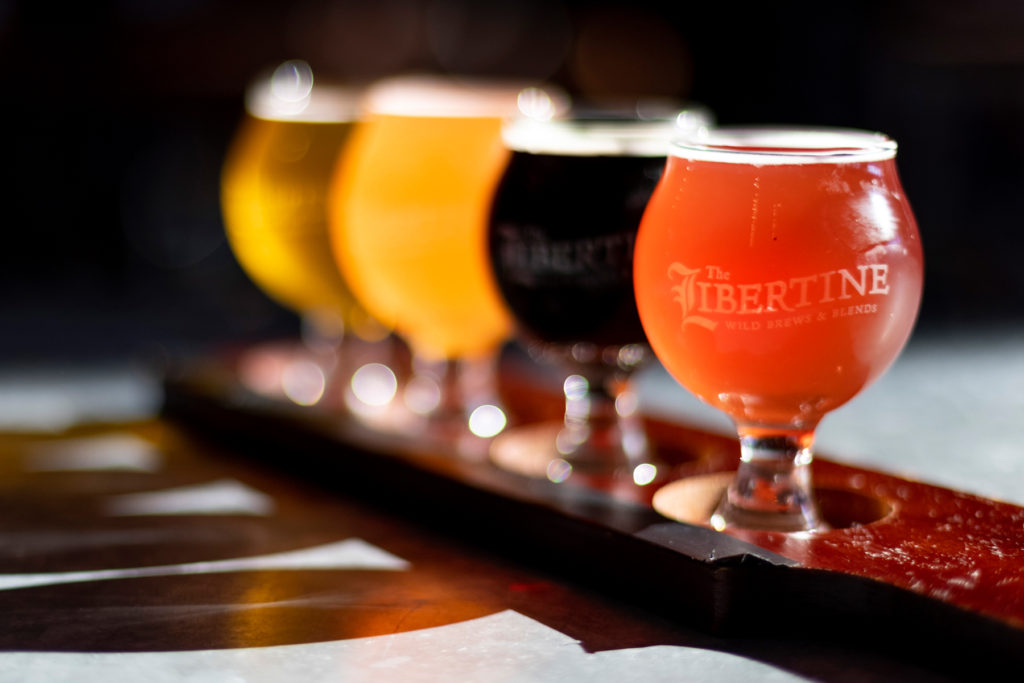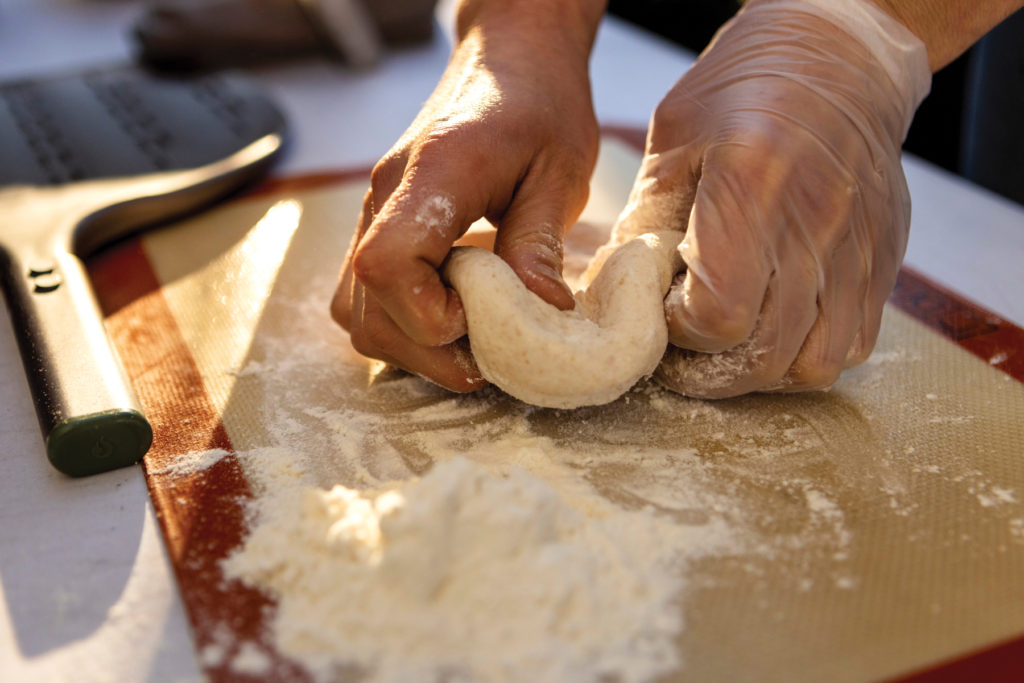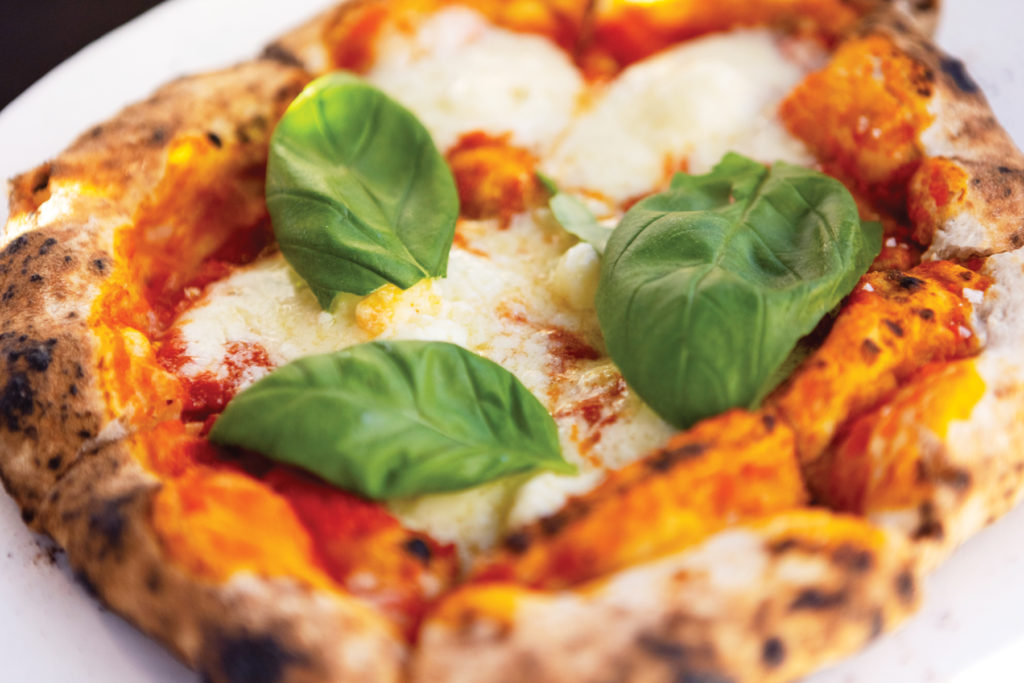
The Power of Sour
Photography by Ruby Wallu
What’s your flavor preference? Sweet? Salty? Spicy? Or maybe it’s sour.
Sour skeptics, get ready to pucker up because expert insight from San Luis Obispo County fermenters may change your mind about sour flavors and your understanding of the microscopic magic at work in these foods and beverages.
Simply put, says Cal Poly Professor of Microbiology Pat Fidopiastis, fermentation is a series of biochemical reactions. A crew of invisible, friendly microbes known as yeasts and bacteria gobbles up sugars to make bubbles, a sour flavor, alcohol or all of the above. “The primary end products of these beneficial microbes are lactic and acetic acid,” he says, referring to the mouthwatering tartness of foods like yogurt, sharp cheeses, sourdough and sauerkraut, or in beverages like wine, beer or kombucha.

Hungry microbes are wild, alive and all around us in the air, on food and on humans. Many beloved foods made here on the Central Coast depend on these wild microbes. Sourdough bread bakers trap them, while brewers and winemakers love to summon them to uncovered vessels. “Open fermentation allows wild yeast to be introduced into our beer, naturally creating the sour flavors,” says Libertine Brewing Company General Manager Emily Kesner.

Whalebird Kombucha CEO and Founder Mike Durighello says their kombucha’s pleasant sour notes come from open fermentation of tea and sugar. It makes “a delicious, bubbly, probiotic tea” that’s quite lively. “We’ve done testing and our culture is very active with around 5 billion probiotics per 16 ounces.” The sourness makes for a balanced kombucha, which is key to Whalebird’s “triangle” of base flavors: sweetness, tartness and dryness. A sour beer or kombucha can even balance out a meal. Mike says kombucha plays nicely with savory plates. “I had one with a curry dish and it hit the spot.”
And those who aren’t used to tart-forward beers may convert with a little guidance. Sours are similar to wine, Emily explains. “We offer tasting notes and a sample taster of a few different styles to see what fits their palates.”

Busy microbes preserve and increase nutrition of foods, too. “Various strains of yeasts add B vitamins such as folate — an essential nutrient that humans can’t make — and amino acids to many kinds of fermented products like sourdough or unfiltered beer,” Pat notes. “A jarred pickle or sauerkraut can last for years!”
Achieving sourness is a fascinating journey. Many cultured recipes require what’s called a “starter,” which is a live colony of microbes that needs to be fed regularly. Monika Knapp, Owner of sourdough microbakery and mobile catering company Colony Culture, feeds her locally grown rye flour starter twice a day. A small amount of the bubbly, sour starter added to a simple dough creates the airy crumb in her savory boules, pizza crusts and focaccia.

She also tends to bubbling veggies, miso pastes and fruits that she uses for her pop-up menus at Colony Mash Brewing Co. in Atascadero. “That’s the fun part: checking in on all my microbes,” she says. Monika ensures a microbial legacy in her other ferments. “I always add cultures from my last batch to my new batch.”


The 175 recipes of Libertine also have a Central Coast microbial story. “We make sure to incorporate as much local product as we can,” says Emily. That includes using local tree fruit, wine barrels and wine grapes.
Whalebird’s story started in 2012 with a second-hand starter. “Before I got my hands on it, someone else was brewing with it so it could easily be — I don’t know — a thousand years old?” Mike jokes. But the joke of the 1,000-year-old SCOBY (symbiotic culture of bacteria and yeast) might only be funny to those who understand its history. Otherwise, it may just sound gross.

Humans have historically shared starters and we’ve learned to love the funky, sour flavors. That’s powerful, says Pat, since the beneficial microbes can help control growth of illness-causing bacteria in our digestive tracts. “We definitely can influence microbial composition in the gut through diet,” he says. “The field of probiotics is a really exciting new frontier in microbiology research.”
If you’re curious about the power of sour, experts suggest testing it yourself. For Monika, home fermentation is a mindful process that requires careful attention to temperature, time, appearance, whereas Mike encourages ‘booch’ fans to use a store-bought brand as a starter. “The way you can tell if the kombucha you are drinking has an active culture is by making your own kombucha with it.”
Whether it’s DIY or bought locally, pucker up and drop some sour into your flavor profile. Sour beer feels “creative and ambitious,” says Emily, and Mike agrees, adding that a sweet and sour profile is “the perfect mixer.”
“Sour makes everything else pop,” Monika summarizes. “But fermenting can really open your mind to flavors.”


